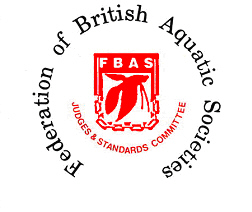



The choice of gravel, rock or bogwood is a personal one. To plant the aquarium you must have something to plant the plants in; 'standard' aquarium gravel is best, larger gravel or fine sand is not recommended.
There is no mandatory need to use either rock or bogwood unless it is your choice to use them in your design, but fish often find the sanctuary and hiding places they provide reassuring.
Thoroughly wash all rocks and gravel before placing it in the aquarium.
Slope the gravel towards the front and then set out any rocks or bogwood.
WATER
Wherever possible, water conditions should be tailored to meet the fishes' requirements.
With tropical marine species this is easily achieved as one set of conditions will generally suffice, since conditions in the oceans are quite similar worldwide. Bear in mind, when budgeting for tropical marine fishes, the ongoing continual cost of synthetic salt mixes required for water changes.
Tropical freshwater and coldwater species may come from several different conditions, according to their natural habitats; hence using only one set of water conditions may not necessarily suit all species.
Fortunately, such species have more tolerance to differing water conditions and will survive quite happily provided they are introduced into any new conditions gradually. Any sudden change of any conditions in the fish's environment is likely to cause disease-inducing stress.
(See FBAS Care Sheets for the specific groups of fishes)
Obviously for tropical species (freshwater or marine) some form of heating must be provided to keep the water at the correct temperature.
Coldwater aquariums may need careful siting if they are not to overheat in summer; Coldwater aquariums sited in windows can be affected by sunlight raising the temperature to abnormal levels. Avoid these positions. sometimes water changes maybe necessary to keep temperatures at the correct level during the hottest summer months.
SELECTING PLANTS
Aquatic plants, like fish, are indigenous to certain areas of the world where the water conditions may vary. When purchasing rooted plants look for a good root structure, leaves free from blemish and damage, in general, the same way in which you would look at a terrestrial plant. Inspect under leaves for snail eggs and remove the jelly-like blobs before placing the plants in aquarium.
Ask how large the plant will grow. Will it be suitable for your setup? Always ask. Non-rooted aquarium plants will need to be weighted down -
a small piece of lead pinched on to the bottom of the plant and just inserted in the gravel will suffice.
Natural plants produce oxygen and absorb carbon monoxide in daylight conditions but reverse this process in the dark. They will also absorb some waste material (fertiliser) produced by the fish.
Finally there are plastic plants, the ones modelled on natural species are very popular and hard to tell from the real thing, they of course will not take up waste material, but good filtration will take care of that. They can however, tolerate being taken out and scrubbed to remove any unwanted algae!
previous page next page
© FBAS 2006 RDE/RCM
Last updated March 2006